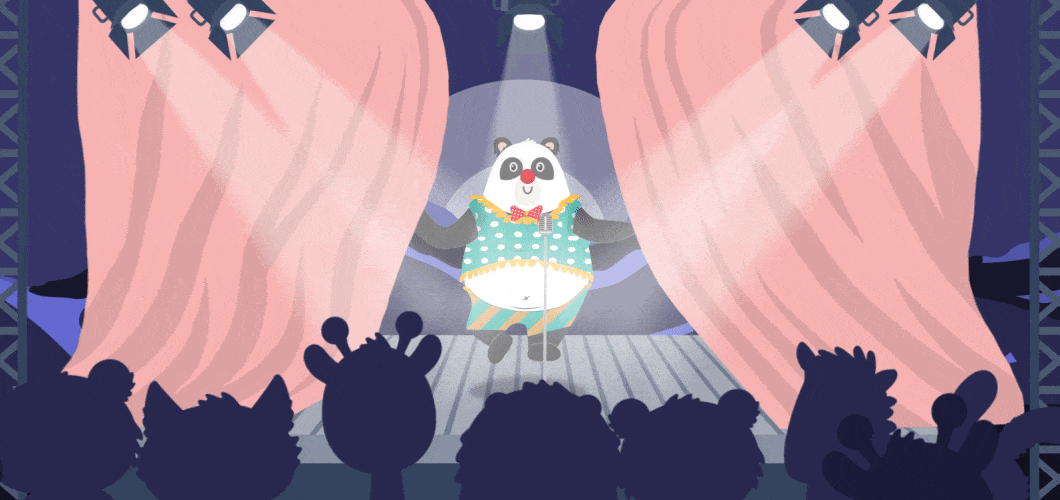The best strategies for making ?em laugh
 It?s not always easy to add humor to your speech. Here are 21 tips to help. Courtesy of the author.
It?s not always easy to add humor to your speech. Here are 21 tips to help. Courtesy of the author.
Note: In November, after working my way from being about as hilarious as a bundle of spinach to making it to the finals of Toastmasters humorous speech contest, I shared what I learned about how to write a funny speech. This is the second part of the series.
 Have you ever listened to a speaker tell joke after joke and? the crowd is completely silent? There may be nothing more uncomfortable ? unless, of course, you are that speaker.
Have you ever listened to a speaker tell joke after joke and? the crowd is completely silent? There may be nothing more uncomfortable ? unless, of course, you are that speaker.
Perhaps you?ve spent weeks crafting your funny speech. You?ve packed it with solid jokes, incorporating tactics such as benign violations, reversed expectations, and tagging. You?ve read through it dozens of times, and it?s hilarious. However, this isn?t even half the battle.
Delivery is important in any type of presentation, but in humorous speeches, it?s critical. You can have the most well-crafted content in the world, but if you don?t know how to deliver it, you?re going to bomb. You don?t want that. I don?t want that. The people sitting in the chairs who?ve battled traffic to be there and have a million other things they could be doing at the very moment ? they don?t want that, either.
Fortunately, there are strategies you can use to do your material justice, as I?ve learned from analyzing dozens of comedians, from Stephen Colbert to Ali Wong. Here?s how to make your jokes land ? and get the laughs they deserve.
Pause before the punchline (sometimes)
When you first start giving funny speeches, you might tell one joke after another, without thinking much about how the audience is processing what you?re saying. This is a mistake. To be surprised by a punchline, people need to have made a prediction ? and formed an opinion ? about what?s coming next. And in order to do that, you need to give them time.
In comedy, a ?pregnant pause? is the short lull of silence just before the punchline ? stand-up comedians use them in their sets constantly. An example from Pete Holmes, performing on Conan:
?Big week in my apartment building. The phone book arrived.?
[Pause]
?Thank God. I don?t know how I was getting by without the phone book. Opened the door and it was staring up at me from the floor like, ?Here, we printed a portion of the internet for you to throw away.??
The joke is fine, but what really makes people laugh are all the pauses. There aren?t any hard-and-fast rules on how or when to use the pregnant pause, and not every joke requires one to work. I find that the jokes that are a bit more involved can benefit from one. The first few times I delivered my humorous speech ? the one that took me to a Toastmasters final competition ? my more complex jokes hardly got any laughs. For instance, this one fell flat: ?They love me at the NSA. They?re so good at listening.? But when I added a pregnant pause ? ?They love me at the NSA. [Pause.] They?re so good at listening? ? the crowd erupted.
Pause after the punchline, too
While you?ll sometimes want to pause before a punchline, you?ll always want to pause after it. I used to be terrible at this. I?d be nervous, so right after I?d finish a joke, I?d immediately jump into the next one. That was especially true when I didn?t hear any laughs right away. In my mind, I?d wonder, ?Did this joke bomb? Oh no, maybe people won?t notice and they?ll laugh at the next one!?
There are a few problems with skipping the post-punchline pause. First, as we just discussed, your audience often needs time to process a joke, especially if it?s complex. Also, you can?t read the audience if you don?t let them react ? the best speakers know how to take cues from the room and riff off them.
Finally, a joke can become even funnier if you go beyond a pause and fully commit to it. Ali Wong knows this. After this joke in her Netflix special Baby Cobra, she spends a full six seconds standing in the same position, staring at the audience unflinchingly. She is committed to her joke.
Eddie Izzard also uses this technique in this ?World History? sketch, except after delivering the joke, his facial expressions and gestures continue, extending the hilarity. This is especially salient at 1:58.
Public speaking coach Judy Carter recommends going even farther and orchestrating the audience after a joke: ?After a joke, don?t step on your laugh, but rather force a reaction by sticking your hands out toward the audience, nodding your head, as if to say, ?Am I right?? ?Don?t you know it???
Slow down
I talk fast. As a kid, I thought this made me look smart. But speaking too quickly doesn?t help anyone. When I was rehearsing for my Toastmasters speech, many people told me that I needed to slow down. I realized I had crammed too many jokes into my speeches and was racing to get through them all to stay under the time limit. The speed watered down the entire speech.
I decided to cut out two or three jokes that weren?t getting huge laughs when I would rehearse in front of others. It was torture to cut good content, but this gave me an extra minute to deliver the remaining jokes, substantially improving the speech.
Know your speech absurdly well
Rehearse. Rehearse. Rehearse. Rehearse. Rehearse. Rehearse. Rehearse. Rehearse. Rehearse. Rehearse. Rehearse. Rehearse. Rehearse. Rehearse. Rehearse. Rehearse. Rehearse. Rehearse. Rehearse. Rehearse. Rehearse. Rehearse. Rehearse. Rehearse. Rehearse. Rehearse. Rehearse. Rehearse. Rehearse. Rehearse. Rehearse. Rehearse. Rehearse. Rehearse. Rehearse. Rehearse. Rehearse. Rehearse. Rehearse. Rehearse. Rehearse. Rehearse. Rehearse. Rehearse. PERFORM. Rehearse. Rehearse. Rehearse. Rehearse. Rehearse. Rehearse. Rehearse. Rehearse. Rehearse. Rehearse. Rehearse. Rehearse. Rehearse. Rehearse. Rehearse. PERFORM. Rehearse. Rehearse. Rehearse. Rehearse. Rehearse. Rehearse. Rehearse. Rehearse. Rehearse. Rehearse. Rehearse. Rehearse. Rehearse. Rehearse. Rehearse. Rehearse. Rehearse. Rehearse. Rehearse. Rehearse. Rehearse. Rehearse. Rehearse. PERFORM. Rehearse. Rehearse. Rehearse. Rehearse. Rehearse. Rehearse. Rehearse. Rehearse. Rehearse. Rehearse. Rehearse. Rehearse. Rehearse. Rehearse. Rehearse. PERFORM. Rehearse. Rehearse. Rehearse. Rehearse. Rehearse. Rehearse. Rehearse. Rehearse. Rehearse. PERFORM. Rehearse. Rehearse. Rehearse. PERFORM. Rehearse. Rehearse. Rehearse. Rehearse. Rehearse. Rehearse. Rehearse. Rehearse. Rehearse. Rehearse. PERFORM. Rehearse. Rehearse. Rehearse. Rehearse. Rehearse. PERFORM. Rehearse. Rehearse. Rehearse. PERFORM. Rehearse. Rehearse. Rehearse. Rehearse. Rehearse. Rehearse. Rehearse. Rehearse. Rehearse. Rehearse. Rehearse. Rehearse. PERFORM.
I ran through my Toastmasters speech around 150 times?a total of 17 hours ? all for a seven-minute speech. That was my whole process: I?d rehearse a handful of times and then perform wherever I could to get a feel for how my jokes were landing and what I could do better.
In a Wait But Why post about public speaking, Tim Urban writes that if you want to deliver your best talk, unless you?re a seasoned pro, you?ll need to memorize it. But you can?t just have it mostly memorized, Urban argues ? you must memorize it to ?a Happy Birthday level,? meaning it must be so ingrained in your mind that it spills out of your subconscious, just like the ?Happy Birthday? song. ?Preparing to this level is a nightmare,? Urban writes, ?but if the stakes are high enough, it?s worth the time.?
One day, after I was deep in my rehearsal process, someone told me, ?You know what could help? Recording yourself.? I wish I had thought of this earlier. Watching videos of my speech gave me a seat at my own show, allowing me to nitpick every imperfection I could find and work on it. For instance, I never noticed ? and nobody had ever told me ? that at the end of every joke, I would glance down because I was thinking about what I was supposed to say next.
Be in the moment
Even if you?ve memorized your speech cold and have given it to your roommate, your mom, your Uber driver, and your cat, when it?s showtime, you need to make people believe that you?re recalling the story for the very first time. Be in the moment ? the audience should feel like they?re part of your journey.
In his viral graduation speech, Rick Rigsby shows what it looks like to be present.
You can hear lots of laughs in the video, but Rigsby is not even making a lot of jokes. For example, people laugh every time he adds ?mmmhhhm? because they are so transfixed by his presence.
When I give funny speeches, I often remind myself that this is not like everyday conversation. This is a performance. It helps me own the jokes and go all in. One trick I use to summon my passion is that I imagine there?s this burning story inside of me that I need to tell someone. Before you give your speech, feel your body building up with energy. Then when it?s time to go on, let that energy out.
When you?re fully in the moment, it?s not a big deal when a joke doesn?t land. Chances are, not all of yours will. You can actually create material on the spot out of jokes that bomb ? in comedy, this is called ?calling the moment.? The character Midge on The Marvelous Mrs. Maisel does this in this clip. She acknowledges that she took a joke too far by saying, ?It was a test! You passed!?
Writing a funny speech is hard. Delivering a funny speech might be even harder. But there?s nothing like spending hours fine-tuning your performance and unlocking that great roar. So work on your timing, cut content, practice, and practice some more. And then get ready to make them laugh.


